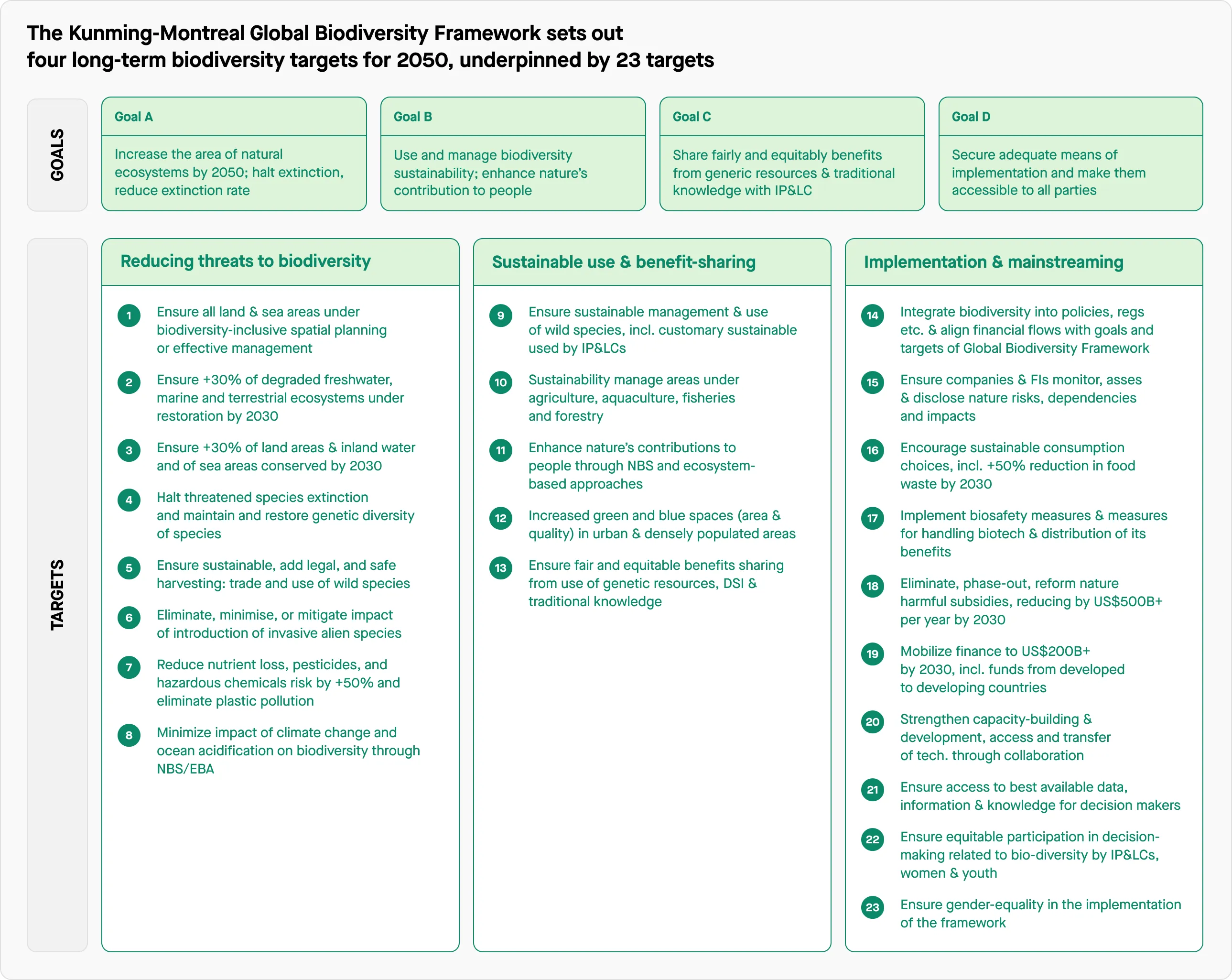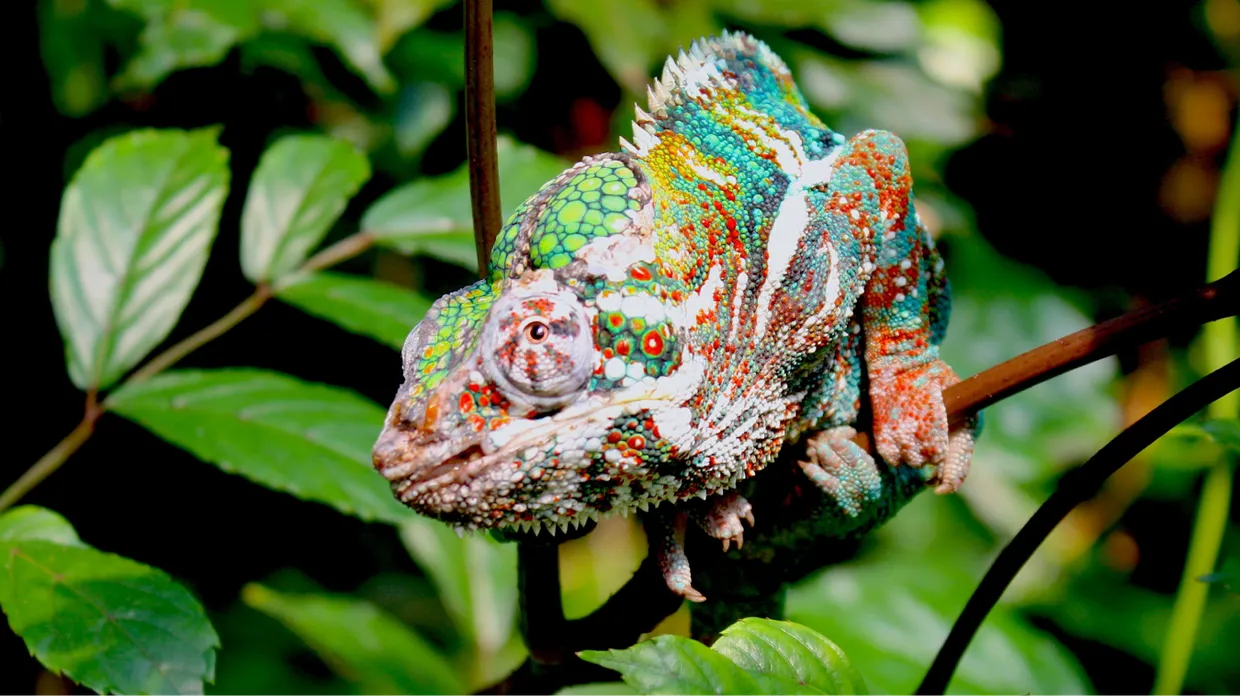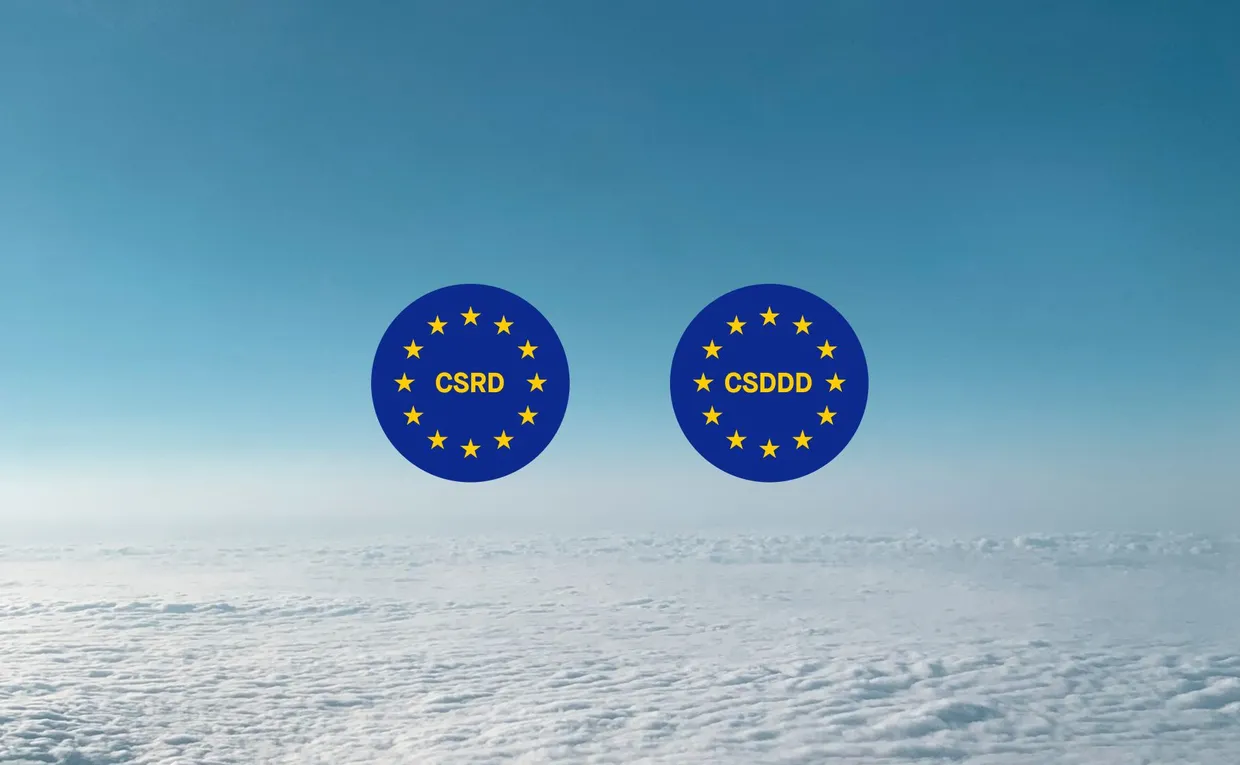As biodiversity is increasingly becoming a key topic of conversation among business leaders, Marie-Anne Vincent shares her six takeaways from COP 15 conference and what you can do to protect nature.
On December 19, 2022, a historic agreement was reached at COP 15: The Kunming-Montreal Global Biodiversity Framework (GBF) which aims to halt and reverse biodiversity loss by 2030.
Not everything is perfect, far from it, but the new global framework is a significant step towards protecting biodiversity and restoring natural ecosystems by 2030. The devil is in the detail, and the effective implementation of the Global Biodiversity Framework will need to be ensured. That said, let us welcome this historic news and be prepared to continue our efforts beyond COP15.
Here are my six key takeaways from the Kunming-Montreal Agreement:
✅ Putting nature on a par with climate
✅ The adoption of the 30×30 flagship targets for land and sea conservation and restoration by 2030
-
30% land and ocean protection target
-
30% restoration target for land and marine ecosystems
✅ Phase out environmentally damaging subsidies by at least US$500B per year
✅ Establishment of a biodiversity fund of US$ 30B per year
✅ Development of Finance for biodiversity and alignment financial flows with Nature
✅ Strong signal for businesses to act, assess, and disclose impacts, dependencies & risks
For many observers, the 30×30 flagship is the biodiversity equivalent of the Paris Agreement’s target of limiting global warming to 1.5°C. To date, only 17% of land and 8% of sea is protected.
1. A bit of context on Biodiversity
🧐 What’s Biodiversity?
Biodiversity is the diversity of the living:
-
the diversity of species
-
the diversity of ecosystems
-
the genetic diversity (diversity within species)
🌏 What’s at stake for biodiversity?
-
The 2019 report by the Intergovernmental Platform on Biodiversity and Ecosystems Services (IPBES) stresses that biodiversity loss must be halted and reversed by 2030 and brought on a path of recovery by 2050, to ensure future viability of our ecosystems. Such a step is vital to secure the ongoing security of investments around the globe.
-
A 2020 report from the World Economic Forum indicates that $44T of economic value, or over half of the world’s GDP, is moderately or highly dependent on nature, and therefore currently at risk as a result of biodiversity loss and ecosystem degradation. Unprecedented biodiversity loss, on the scale we currently face, would entail significant threat to global growth and financial security.
-
The Living Planet Index determined an average decline of 68% in animal population sizes between 1970 and 2016 with some species groups and continents experiencing even greater loss.
🤨 What’s COP15?
-
What? The 15th United Nations conference on biodiversity
-
When? From 7 to 19 December 2022
-
Where? In Montreal, Canada, under the Chinese presidency (yes, it was originally in China but it has been postponed for 2 years because of COVID!)
-
Who? The 196 State Parties to the UN Convention on Biological Diversity (CBD)
🧩 What were the objectives for this COP15?
-
Negotiations on the post-2020 Global Biodiversity Framework that defines the ambitions for biodiversity protection by 2050, and set up an action plan for 2030, around 22 quantified targets.
-
As the former Aichi targets, adopted in 2010 for 2020, were mostly not reached, the COP15 was therefore highly expected to be the biodiversity counterpart of the Paris Agreement for climate.
2. The Kunming-Montreal Global Biodiversity Framework (GBF)
This “peace pact with nature”, known as the “Kunming-Montreal Accord”, is broken down into four objectives and 23 targets, as summarized below by the Boston Consulting Group (BCG):

Source: Boston Consulting Group (BCG)
Regarding the monitoring mechanism, absent from the Aïchi objectives, State Parties committed this time to publishing their biodiversity plans by COP16, which will be held in Turkey in 2024. These will be reviewed regularly and a global assessment will be carried out in 2026, at the halfway point.
Regarding the monitoring mechanism, absent from the Aïchi objectives, State Parties committed this time to publishing their biodiversity plans by COP16, which will be held in Turkey in 2024. These will be reviewed regularly and a global assessment will be carried out in 2026, at the halfway point.
Nature can’t wait. Businesses must act now and engage with the rapidly changing environment.
As for climate, measuring and assessing your footprint and risks are the first steps:
-
Appraise your biodiversity footprint
-
Define your fair share of restoration & conservation obligations
-
Identify your sources of pollution and negative impacts on nature across your value chain
Here are some useful resources to help you:
💰 A guide on how to integrate biodiversity into financing activities and decision-making
📏 How to align financial flows with biodiversity goals and targets



